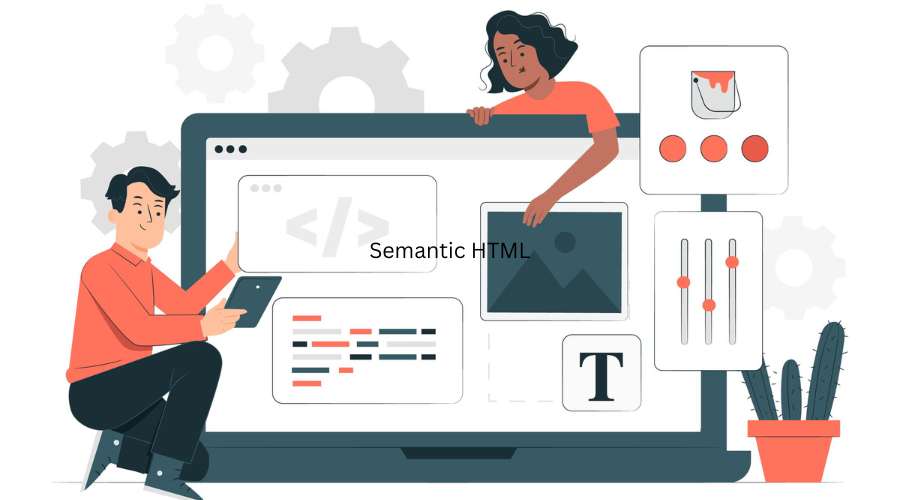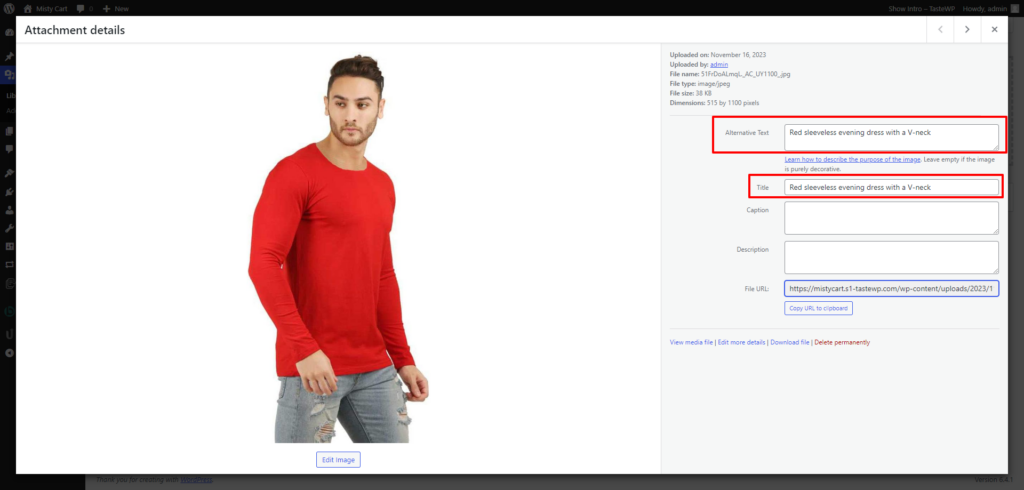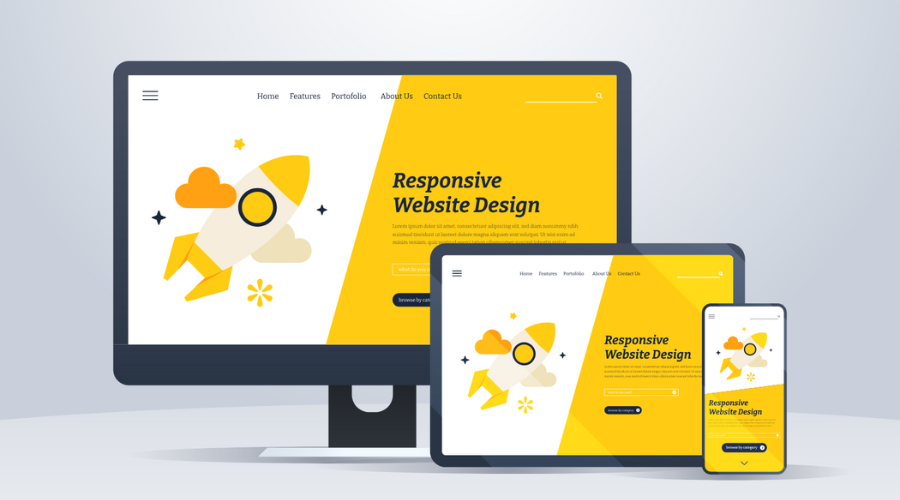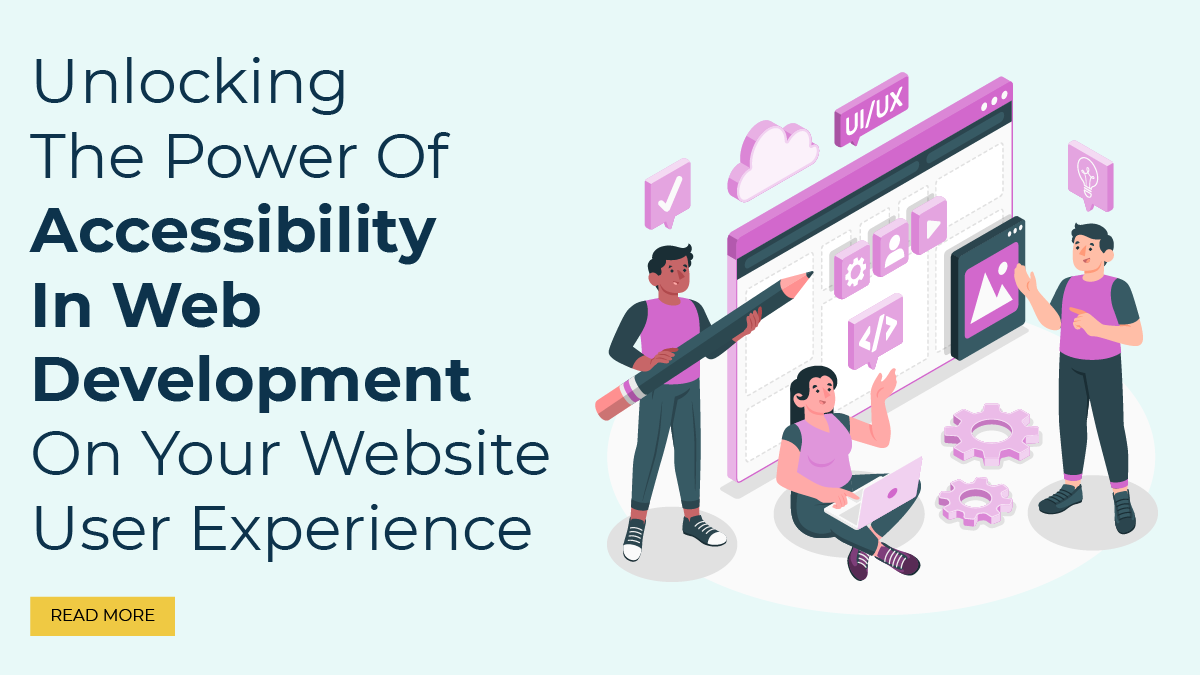The significance of web accessibility in web development cannot be overstated. It’s a crucial aspect that impacts not only the user experience but also the inclusivity and reach of your website. Imagine visiting a website where the text is too small to read, the images lack alt text, and interactive elements are impossible to navigate using a keyboard. Frustrating, right? For many individuals with disabilities, this is an everyday reality when browsing the web.
Accessibility in web development refers to the practice of designing and building websites that are usable by people of all abilities. It aims to remove barriers and ensure that everyone, regardless of disabilities, can access and interact with online content effectively. This not only complies with legal requirements, such as the Americans with Disabilities Act (ADA) and the Web Content Accessibility Guidelines (WCAG), but also contributes to a positive user experience.
In this blog, we will delve into the world of web accessibility and explore how it can be a game-changer for your website. We’ll uncover the benefits of prioritizing accessibility in web development, discuss the key principles and guidelines, and provide practical insights and strategies for implementing accessibility features in your web development projects.
Whether you’re a web developer looking to create more inclusive websites or a business owner aiming to expand your online reach, this blog is your gateway to unlocking the power of accessibility in web development. Join us on this journey to create websites that not only meet compliance standards but also enhance the user experience and promote inclusivity for all.
What Is Accessibility In Web Development?
Accessibility in web development refers to the practice of designing and building websites in a way that ensures they can be used, understood, and navigated by as many people as possible, regardless of their physical or cognitive abilities. It involves creating digital environments that are inclusive and barrier-free, allowing individuals with disabilities to access web content and functionality with ease. Accessibility is not just a legal requirement in many countries, but it’s also a fundamental aspect of ethical web development.
To achieve web accessibility, developers consider a wide range of disabilities and impairments, including visual, auditory, motor, and cognitive impairments. They aim to address these issues by implementing various design and development techniques. Here’s a breakdown of some key aspects of web accessibility:
- Visual Accessibility: To cater to individuals with visual impairments, websites need to provide alternatives to visual content. This includes using descriptive alt text for images, ensuring proper contrast between text and background, and allowing users to adjust text size without loss of content or functionality.
- Keyboard Navigation: Not all users can use a mouse, so websites should be operable using only a keyboard. This means ensuring that all interactive elements can be navigated and activated using keyboard shortcuts.
- Screen Reader Compatibility: Websites should be compatible with screen reader software used by individuals with visual impairments. This involves providing semantic HTML elements, proper labeling of form fields, and ensuring that dynamic content is announced correctly.
- Captioning and Transcripts: For multimedia content like videos and podcasts, providing captions and transcripts is essential to make the content accessible to individuals who are deaf or hard of hearing.
- Consistency and Predictability: Users with cognitive disabilities often benefit from clear and consistent navigation structures and layouts. Providing clear headings, menus, and labels helps users understand the content’s organization.
- Forms and Error Handling: Forms should be designed with accessibility in mind. This includes providing descriptive field labels, error messages that are clearly associated with the problematic field, and input validation that doesn’t rely solely on color.
- Responsive Design: Ensuring that websites are responsive and adaptable to various screen sizes and orientations is crucial for users with disabilities who may use a variety of devices to access content.
Why Is Accessibility In Web Development Of A Website Important?
Accessibility in web development is not just a technical requirement or a legal obligation; it’s a fundamental principle of good web design and development. There are several compelling reasons why accessibility should be a top priority in the development of any website:
- Inclusivity: Perhaps the most critical reason for web accessibility is inclusivity. The internet is a vital part of modern life, and everyone should have equal access to the information and services it offers. By making websites accessible, we ensure that people with disabilities are not excluded from the digital world.
- Legal Compliance: Many countries have laws and regulations in place that require websites to be accessible to people with disabilities. There can be legal consequences for failing to comply with these laws, such as fines and lawsuits.
- Wider Audience Reach: By improving accessibility, websites can reach a broader audience. This includes not only people with disabilities but also older individuals with changing sensory abilities and people using a wide range of devices, such as smartphones and tablets.
- Enhanced User Experience: There are many benefits associated with accessibility features, not just for disabled individuals. For example, captions in videos are useful in noisy environments or when the sound is turned off. Well-structured content benefits everyone by making information easier to find and understand.
- Improved SEO: Many accessibility practices, such as using descriptive alt text for images and creating semantic HTML, align with good SEO practices. This can lead to better search engine rankings and increased visibility for your website.
- Positive Brand Image: Demonstrating a commitment to accessibility can enhance your brand’s reputation. It shows that you care about all your users and are willing to go the extra mile to provide an inclusive online experience.
- Future-Proofing: As technology evolves, so do the ways people interact with websites. Prioritizing accessibility ensures your website remains relevant and functional for all users, regardless of how technology advances.
By embracing web accessibility, you’re not only complying with the law but also making a positive impact on society and demonstrating your commitment to a more inclusive digital world.
Principles Of Accessibility In Web Development
Accessibility in web development is guided by a set of principles and guidelines that web developers and designers follow to create websites that are inclusive and usable by people with disabilities. These principles help ensure that web content can be perceived, operated, and understood by a broad audience. Here are the key principles of web accessibility:
- Perceivable: Information and user interface components must be presented in a way that can be perceived by all users, regardless of their sensory abilities. This principle encompasses various aspects:
- Text Alternatives: Provide text alternatives for non-text content like images, videos, and audio. This allows screen readers to convey the information to users with visual or cognitive impairments.
- Time-Based Media: For multimedia, provide alternatives like captions and transcripts so that users with hearing impairments can access the content.
- Adaptable Content: Ensure that content can be presented in different ways without losing meaning or functionality. This includes a responsive design that accommodates various screen sizes and orientations.
- Operable: Users should be able to navigate and interact with web content using a variety of methods, including keyboard navigation and assistive technologies. Key considerations for operability include:
- Keyboard Accessibility: Ensure that all interactive elements, such as links, buttons, and form fields, can be accessed and activated using a keyboard.
- Navigation: Implement clear and consistent navigation structures, including skip-to-content links, to help users find their way around the website.
- Input Assistance: Provide input assistance, such as error messages and suggestions, to help users complete forms and tasks successfully.
- Understandable: Web content should be presented in a clear and understandable manner. This principle emphasizes the following:
- Readability: Use clear and simple language to make content understandable to a wide audience, including those with cognitive disabilities.
- Consistency: Maintain a consistent layout and design throughout the website, so users can predict where to find information and how to use interactive elements.
- User Control: Allow users to control aspects of their experience, such as stopping or pausing auto-playing content and adjusting the timing of time-based media.
- robust: content and web technologies should be developed to work reliably across different user agents (browsers and assistive technologies) and future technologies. This principle ensures that accessibility features remain effective as technology evolves.
- Semantic HTML: Use semantic HTML elements to provide meaningful structure to content. Semantic markup ensures that assistive technologies can accurately interpret and present content to users.
- Aria Roles and Attributes: Implement ARIA (Accessible Rich Internet Applications) roles and attributes when necessary to enhance the accessibility of dynamic and interactive content.
Adhering to these principles is fundamental to creating an inclusive web environment. They serve as a foundation for the Web Content Accessibility Guidelines (WCAG), which provide specific criteria and techniques for achieving web accessibility. Developers and designers use these principles and guidelines to assess and improve the accessibility of websites, making the web a more welcoming and usable space for everyone, regardless of their abilities or disabilities.
7 Checklist For Accessibility In Web Development
Accessibility in web development is a crucial aspect of creating websites that can be used and enjoyed by everyone, regardless of their physical or cognitive abilities. Ensuring accessibility not only promotes inclusivity but also helps your website reach a broader audience. There are 7 main accessibility checkpoints or guidelines that web developers should follow to ensure their websites are accessible:
1. Semantic HTML:

Semantic HTML, or Hypertext Markup Language, forms the foundation of web accessibility. It involves using HTML elements for their intended purposes, which aids in creating a well-structured and meaningful web page. This approach benefits users with disabilities by allowing screen readers and other assistive technologies to interpret and present content accurately.
For instance, when creating a web page, using the <h1> element for the main heading establishes the hierarchy of information. Subheadings can then be structured using <h2>, <h3>, and so on. This semantic structure not only visually organizes content but also provides clear semantic cues to assistive technologies, helping users understand the content’s organization.
Additionally, using semantic elements like <nav> for navigation menus and <button> for interactive elements enhances accessibility. When you use <nav>, screen readers can identify the navigation section, making it easier for users to locate and access menus. Likewise, using <button> for interactive elements instead of generic <div> or <span> elements ensures that users can interact with the content using keyboard commands and screen readers can convey their functionality.
Overall, semantic HTML to WordPress is a fundamental principle of web accessibility, ensuring that web content is structured and presented in a way that benefits all users, including those with disabilities. Proper use of semantic elements simplifies the understanding of web content and significantly enhances the user experience.
2. Keyboard Navigation:
Keyboard navigation is a crucial aspect of accessibility in web development, ensuring that individuals who rely on keyboards or alternative input devices can fully interact with a website without barriers. An accessible website should allow users to navigate through all interactive elements, links, forms, and menus using only keyboard inputs. It’s essential to provide an experience where users can easily access and interact with content without encountering obstacles or becoming trapped in keyboard “dead ends.”
For example, consider an e-commerce website. To make it keyboard accessible, developers must ensure that users can tab through product listings, select items, and add them to their cart using keyboard inputs alone. Additionally, users should be able to complete the checkout process, including filling out shipping and payment forms, with ease. Proper focus management and a logical tab order play a pivotal role in this process. This means that when a user presses the Tab key, the focus indicator should move sequentially through interactive elements in a way that makes sense, following the visual layout of the page and providing clear feedback on which element is currently in focus.
Overall, keyboard navigation is a fundamental element of web accessibility, guaranteeing that users who rely on keyboards can navigate, interact with, and fully utilize a website’s features, ensuring an inclusive digital experience for all.
3. Alt Text For Images:
Alt Text for Images is also a fundamental component of accessibility in web development, ensuring that images are accessible to all users, including those with visual impairments. It involves providing descriptive alternative text (alt text) that conveys the image’s content and purpose to users who cannot see it.

For example, consider an e-commerce website selling clothing. There’s an image of a red dress. A suitable alt text for this image would be “Red sleeveless evening dress with a V-neck.” This alt text provides a clear and concise description of the image, allowing users with visual impairments to understand what the image represents.
Alt text is particularly crucial for users who rely on screen readers. When a screen reader encounters an image, it reads aloud the alt text associated with it, providing context and meaning. This enables users to comprehend the image’s significance, whether it’s a product photo, an infographic, or a decorative element. Inserting an Alt tag in WordPress helps to optimize images for websites
It’s essential to distinguish between decorative images and informative ones. Decorative images that don’t convey meaningful content should have empty alt attributes (alt=””) to ensure they are ignored by assistive technologies. This practice prevents screen readers from unnecessarily announcing irrelevant images, improving the overall user experience for individuals with disabilities while maintaining the aesthetic appeal of the website.
4. Aria Roles And Attributes:
ARIA (Accessible Rich Internet Applications) roles and attributes are vital tools in web development, particularly when creating dynamic and interactive content like AJAX-driven web applications. They play a crucial role in enhancing accessibility in web development by providing additional information to assistive technologies, ensuring that complex web applications are more understandable and usable for all users.
For example, let’s consider a web application with a set of tabs used for navigation. Without ARIA roles and attributes, users relying on screen readers might struggle to understand the functionality of these tabs. By implementing ARIA roles, developers can convey that these elements represent tabs, making their purpose clear to assistive technology users. Here’s how it works:
<div role=”tablist”>
<button role=”tab” aria-selected=”true” id=”tab1″>Tab 1</button>
<button role=”tab” aria-selected=”false” id=”tab2″>Tab 2</button>
<button role=”tab” aria-selected=”false” id=”tab3″>Tab 3</button>
</div>
In this example, the role=”tablist” attribute informs assistive technologies that this is a container for tabs, and each button with role=”tab” represents an individual tab. The aria-selected attribute indicates the currently selected tab. As users navigate through the tabs, they receive clear and structured information about the interface’s functionality, greatly improving the accessibility and usability of the web application.
Overall, ARIA roles and attributes are essential in web development for creating accessible and user-friendly dynamic content. They bridge the gap between complex interactive elements and assistive technologies, making the web a more inclusive space for all users.
5. Color Contrast:
Color contrast is a critical aspect of accessibility in web development. It plays a vital role in ensuring that text content is legible and comprehensible for all users, including those with low vision or color blindness. The Web Content Accessibility Guidelines (WCAG) provide specific requirements for contrast ratios between text and background colors to enhance readability.
For example, WCAG 2.0 Level AA requires a minimum contrast ratio of 4.5:1 for normal text and 3:1 for large text (defined as text that is 18pt or 14pt bold and larger). This means that there should be sufficient differentiation in luminance (brightness) between the text and its background to make the text stand out clearly.
To meet these requirements, web developers often use color contrast-checking tools. These tools analyze the color values of text and background elements and calculate the contrast ratio automatically. If the contrast ratio falls below the specified threshold, the tool alerts the developer, indicating that adjustments are needed to improve accessibility.
For instance, if a website uses light gray text on a white background, a color contrast checking tool would identify the insufficient contrast and recommend choosing a darker text color or adjusting the background color to achieve compliance with WCAG guidelines. By ensuring adequate color contrast, web developers can make content more accessible and user-friendly for individuals with visual impairments.
6. Form Accessibility:
Forms are a ubiquitous feature of websites, allowing users to input data, submit requests, and interact with digital content. Ensuring the accessibility of these forms is paramount to providing an inclusive user experience. Accessibility in form development involves several key principles, including the use of appropriate HTML form elements, associating labels with form fields, providing error messages and instructions, and ensuring form validation is communicated effectively to screen reader users.
One fundamental aspect of form accessibility is providing clear and descriptive labels for form fields. For example, instead of simply having a text input field labeled “Name,” it’s essential to use an associated <label> element to provide a more informative label, such as <label for=”name”>Full Name</label>. This approach makes it clear to all users, including those with disabilities, what information is expected in the field.
Another crucial element is the use of <fieldset> and <legend> elements for group-related form controls. For instance, in a registration form, grouping all address-related fields within a <fieldset> element with an associated <legend> like <legend>Address Information</legend> provides context and structure for users, especially those who rely on screen readers.
Moreover, indicating required fields with the aria-required=”true” attribute or using the HTML required attribute ensures that assistive technologies can convey this information accurately to users. Screen reader users, for instance, will be alerted to mandatory fields, reducing confusion during form submission.
Overall, form accessibility in web development is about creating user-friendly and inclusive forms that consider the needs of individuals with disabilities. By implementing clear labels, grouping related elements, and indicating required fields, developers can enhance the usability and accessibility of web forms for all users.
7. Responsive Design:

Responsive design is a crucial aspect of web accessibility that focuses on ensuring a website’s usability across various screen sizes and devices. It involves creating web layouts and content that adapt fluidly to accommodate different screens, such as desktop monitors, laptops, tablets, and smartphones. Responsive design benefits not only users without disabilities but also those with various impairments who rely on different devices and assistive technologies. You can consider using Responsive WordPress Themes for more help.
For example, consider a news website that employs a responsive design. On a desktop computer, the site’s layout may feature multiple columns of text and images. However, when accessed on a smartphone, the layout automatically adjusts to a single-column format, making it easier for users with visual or motor impairments to navigate through content using touch gestures or screen readers.
Testing for responsive design is essential to ensure that your website remains accessible across various devices. By conducting thorough testing, you can identify and address any issues related to layout, text readability, and interactive elements, making your website more inclusive for all users, regardless of the device they use to access your content.
Conclusion
In conclusion, the journey through the world of accessibility in web development has revealed its profound importance, especially when considering the use of WordPress Elementor themes. We’ve explored the fundamental principles that guide inclusive design, delved into the significance of accessibility in web development, and uncovered seven essential checkpoints for creating accessible websites, even when utilizing WordPress Elementor themes.
From using semantic HTML for a well-structured foundation to ensuring keyboard navigation for those who rely on it, and providing clear alt text for images, these checkpoints form the building blocks of an accessible web. The use of ARIA roles and attributes enhances dynamic content while paying attention to color contrast and form accessibility to ensure a seamless experience for all users.
Finally, responsive design ensures that your website caters to diverse screen sizes and devices, accommodating users with various disabilities. By embracing these principles and checklists, we not only meet legal requirements but also create an inclusive online space that welcomes everyone, fostering a better, more accessible web for all. Accessibility is not just a goal; it’s a commitment to making the digital world more equitable and user-friendly.
The WordPress theme bundle, paired with premium Elementor themes, prioritizes accessibility in web development. These themes are crafted with features like clear navigation, optimized contrast, and robust semantic structure to ensure inclusivity for all users, including those with disabilities. Through thoughtful design choices, they guarantee a seamless and enjoyable experience for every visitor, aligning with accessibility standards and fostering a more inclusive online environment.




